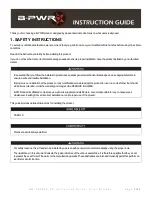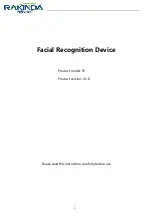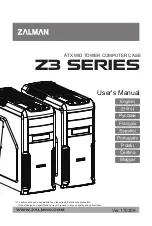
13
MN-833
LoadLifter 5000 Ultimate
TUNING THE AIR PRESSURE
Pressure determination comes down to three things — level vehicle, ride comfort and
stability .
1 . Level vehicle
If the vehicle’s headlights are shining into the trees or the vehicle is leaning to one
side, then it is not level (Fig . 15) . Raise the air pressure to correct either of these
problems and level the vehicle .
2 . Ride comfort
If the vehicle has a rough or harsh ride it may be due to either too much pressure or
not enough (Fig . 16) . Try different pressures to determine the best ride comfort .
3 . Stability
Stability translates into safety and should be the priority, meaning the driver may
need to sacrifice a perfectly level and comfortable ride . Stability issues include roll
control, bounce, dive during braking and sponginess (Fig . 17) . Tuning out these
problems usually requires an increase in pressure .
GUIDELINES FOR ADDING AIR
1 . Start with the vehicle level or slightly above .
2 . When in doubt, always add air .
3 . If the front of the vehicle dives while braking, increase the pressure in the front air bags,
if equipped .
4 . If it is ever suspected that the air bags have bottomed out, increase the pressure (Fig . 18) .
5 . Adjust the pressure up and down to find the best ride .
6 . If the vehicle rocks and rolls, adjust the air pressure to reduce movement .
7 . It may be necessary to maintain different pressures on each side of the vehicle .
Loads such as water, fuel, and appliances will cause the vehicle to be heavier on one
side (Fig . 19) . As much as a 50 PSI difference is not uncommon .
Bad headlight aim
Sway and
body roll
Rough ride
fig. 15
fig. 17
fig. 16
Bottoming out
Unlevel
Level
fig. 18
fig. 19






































